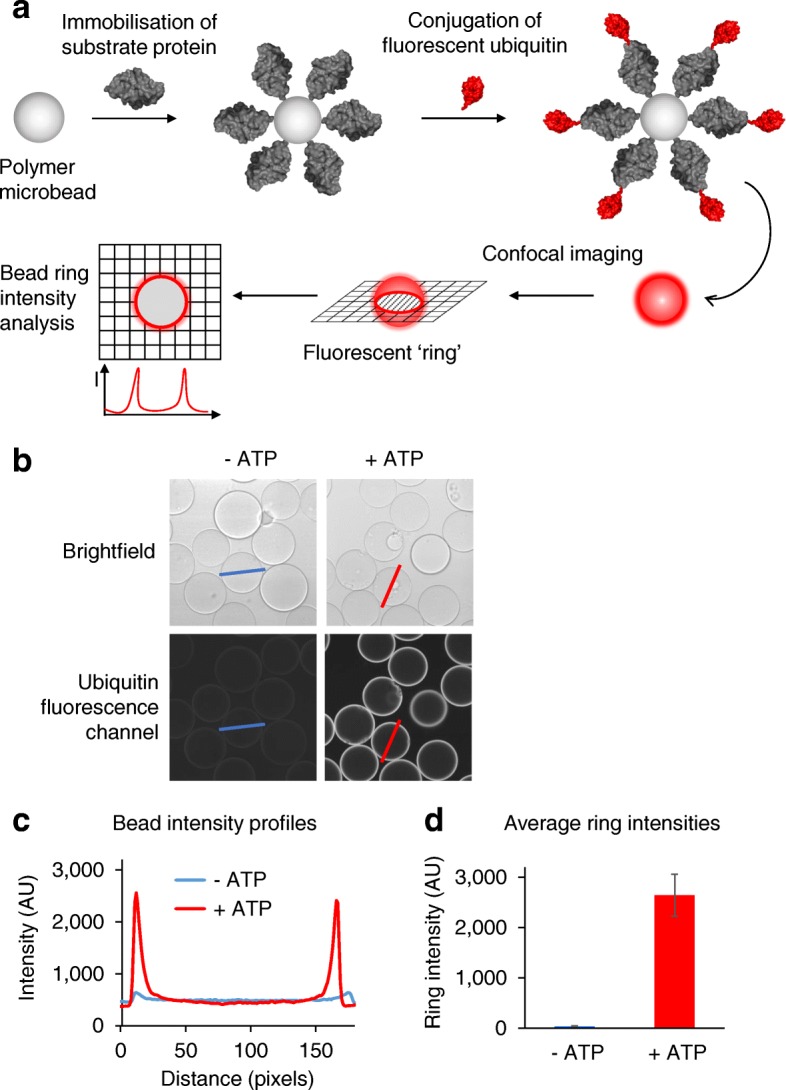Fig. 1.

Detection of ubiquitination using confocal nanoscanning (CONA). a A substrate protein is immobilized on polymer microbeads and incubated with a suitable mix of conjugating enzymes and with a fluorescently labeled ubiquitin (red). Upon ubiquitin conjugation to the protein substrate, a fluorescent “ring” will become detectable in the confocal image plane across the microbeads. b Images of beads in a 384-well plate were acquired using the confocal scanning microscope Opera™ (Perkin Elmer) in brightfield for bead detection (top images) and in the fluorescence emission channel of the dye on ubiquitin for detection of ubiquitin conjugates (bottom images). A reaction without ATP (−ATP) was used as control for possible non-enzymatic binding. Intensity profiles across beads (blue and magenta lines) were used for quantification of fluorescence emission intensity, which is proportional to the amount of conjugated ubiquitin at the concentrations used. c Bead cross-section intensity profiles from b were acquired using ImageJ software. d Intensity profiles of > 100 beads in a test well were analyzed as detailed in “Methods” to calculate average ring intensities in each well
